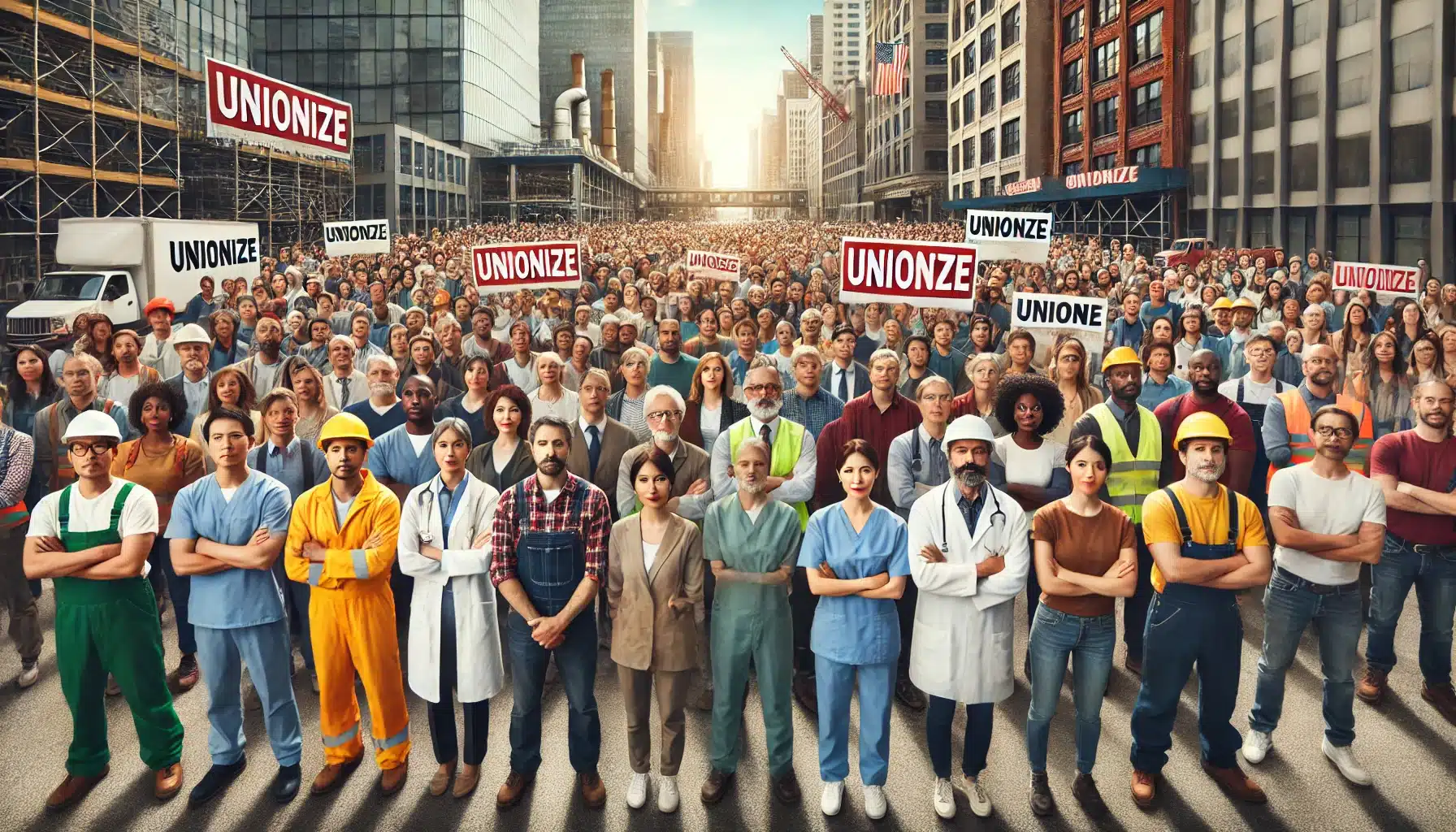In recent years, a growing number of US workers have expressed interest in joining unions, but companies are still resistant.
The desire for union membership is at a record high, with millions of workers hoping to secure better wages, benefits, and working conditions.
However, many of these workers face significant barriers that prevent them from organizing.
The Economic Policy Institute (EPI) reveals while 60 million US workers say they want to join a union, only about 16 million are actually represented by one.
This gap highlights the challenges workers face in exercising their right to organize.
Why Are Workers Struggling to Join Unions?
Despite strong interest in unionizing, several obstacles make it difficult for workers to join unions or form new ones:
- Employer Resistance: Employers often oppose unionization efforts. They may use tactics such as delaying the process, firing union supporters, or intimidating workers.
- Weak Labor Laws: US labor laws offer limited protection for workers trying to unionize. Many of these laws are outdated and fail to prevent employer retaliation against union efforts.
- Lack of Awareness: Some workers are simply unaware of how to form or join a union. In some industries, unionization is less common, making it harder for workers to navigate the process.

Workers of Color and Public Sector Employees
The unionization gap is particularly evident among certain groups of workers.
Workers of color and those in the public sector are more likely to be unionized. This reflects the historical trends of union membership and the unique challenges faced by marginalized groups in the workplace.
According to EPI, workers of color are more likely to support unionization because unions have historically fought for racial equality in the workplace.
Public sector employees, like teachers and government workers, also have higher unionization rates. This is partly due to the relative stability of public sector jobs and stronger union protections in those industries.
Hiring? Post jobs for free with WhatJobs
Why Are Unions Important?
Unions play a vital role in improving the lives of workers. Some of the key benefits of union membership include:
- Better Pay: Unionized workers typically earn higher wages compared to their non-union counterparts. This is especially important as inflation and cost-of-living increases continue to affect workers’ purchasing power.
- Improved Benefits: Unions help secure better benefits, including healthcare, retirement plans, and paid leave.
- Job Security: Unions help protect workers from unfair layoffs or firings by negotiating stronger job protections.
- Better Working Conditions: Unions push for safer and healthier work environments. Workers are more likely to have a voice in safety issues when they are part of a union.
Key Takeaways
The push for union membership in the US is stronger than ever, but the barriers to joining a union remain substantial.
Despite these obstacles, unions continue to play an essential role in improving wages, benefits, and working conditions for workers.
Need Career Advice? Get employment skills advice at all levels of your career
What’s Next for Workers?
As union interest grows, the question remains: will workers be able to overcome the barriers to unionization?
The future of union membership in the US depends on the balance of power between workers, employers, and the legal system. It remains to be seen whether these obstacles will be addressed in the near future.




